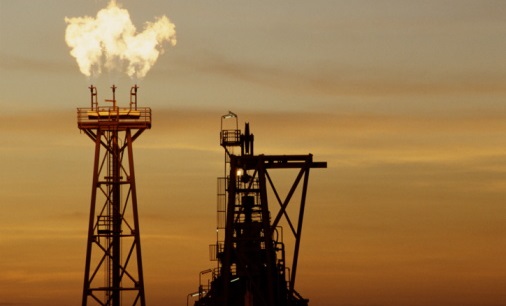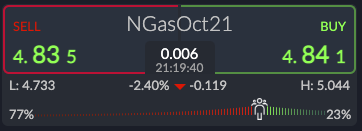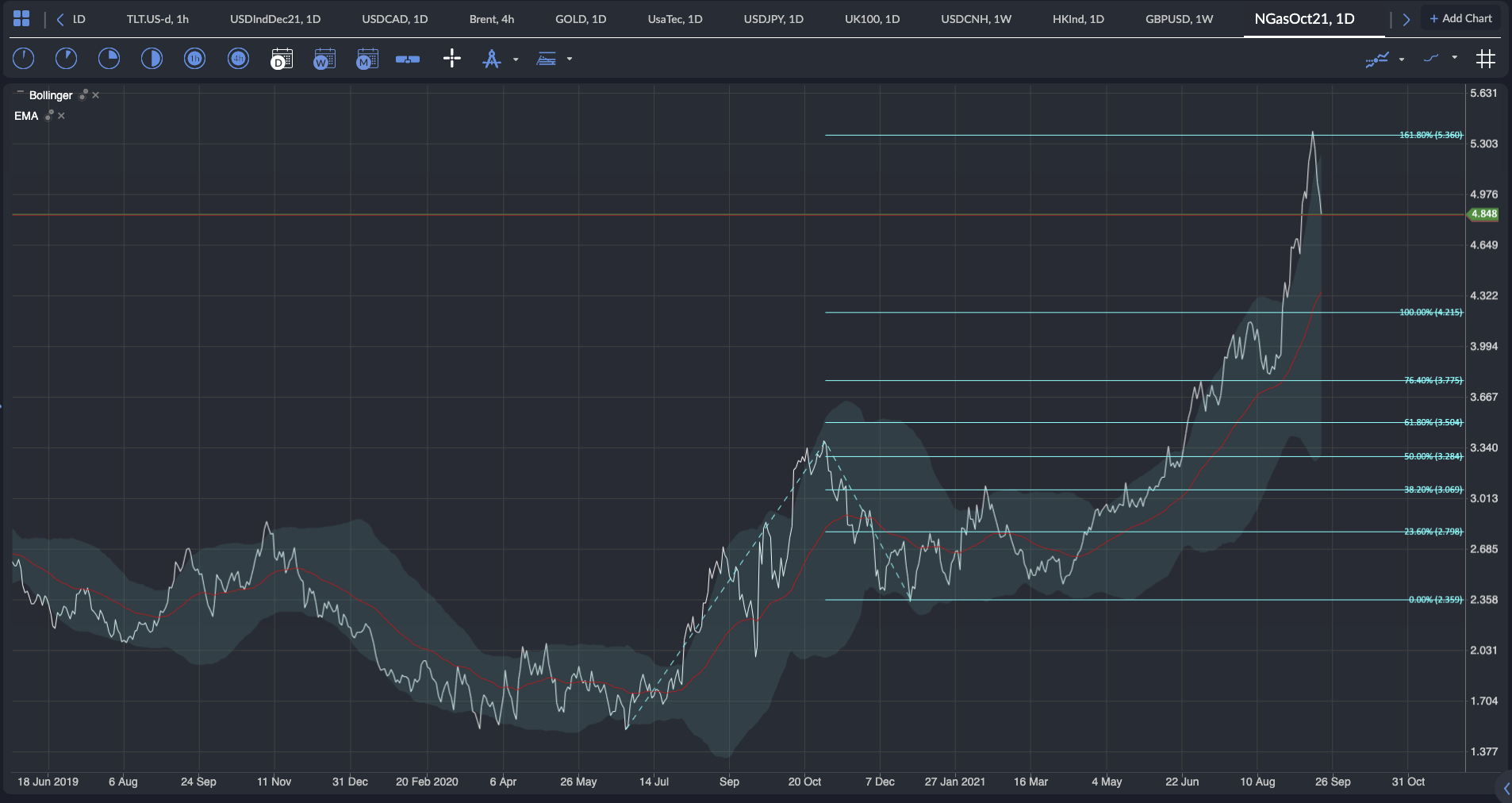Commodity Analysis
The sentiment within the retail trading community is that the Nat Gas futures have hit a price target and are now destined to come lower. As much as I wish to be a contrarian to this and say I believe the Nat Gas prices go higher, I am finding it hard to find a real bullish reason to go long up here, right now.
When you see a UK Parliamentary minister asking for calm as crisis fears erupt across the red top weekend papers, which then spreads into ministers’ questions on the following Monday, we’re probably too late to get in on a trade.
UK gas prices have soared, and it’s the same for other importing countries. So the UK business secretary Kwasi Kwarteng, held a series of emergency meetings between the government, energy firms, and regulators over the weekend to work out what is going on. Darren Jones, chair of the Commons business select committee, said: “We’ve known for some time that the UK is over-reliant on imported gas. Customers on low incomes need targeted help this autumn/winter. And ministers need to get a move on building a more resilient and sustainable UK energy system.”
It would appear the UK government regulation that set a price cap for consumers, plus the ease in which consumers can switch providers looking for the cheapest deals has sent a lot of energy providers to the wall under the current market conditions. The energy providers themselves haven’t hedged sufficiently or taken out insurance on the parabolic moves in the wholesale markets, so they are having to buy gas at elevated prices but are unable to pass that cost on. There is little chance that the gas gets turned off at the end-user but the automatic switch from providers will happen as energy providers become insolvent. Next year there is a likelihood the consumer not only has less choice in whom to use as a provider, but we’ll also have to pay up to £400 more for the privilege.
Gas prices had risen by more than 70% in August alone as the uptrend in prices since Q2 2021 followed a long winter in which gas stores across Europe and Asia were heavily depleted. Gas storage is currently down about 16% on average with supplies from Russia, Europe and Norway slowing. By 2027 the oil and gas industry predict that the North Sea production of gas will be halved, making the UK more reliant on imports. Assuming we still have a high demand.
It’s not just LNG and Natural Gas that is currently in a tight market, there is a lack of carbon dioxide, a by-product of heavy industry which means there is another potential cause for food shortages this year. Just add this latest supply bottleneck to the Brexit disruptions, Covid disruptions, inflation costs. CO2 is commonly used by meat producers to slaughter animals humanely and to also help package food. There have been calls for government assistance to keep producers from having to unnecessarily slaughter animals and to ensure Christmas is saved. This is clearly getting emotional as it’s one thing after another for the food industry.
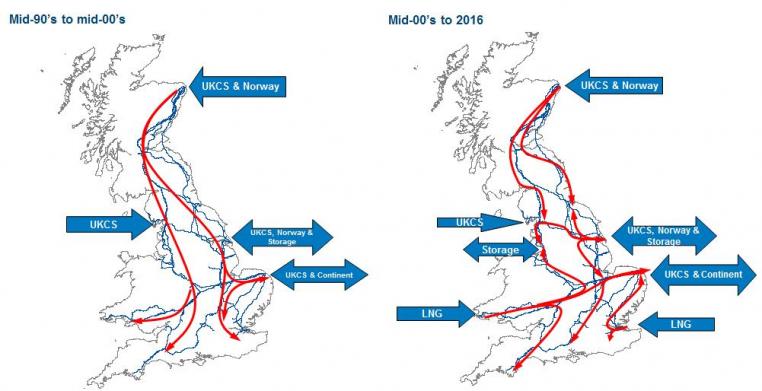

The UK benefits from having a diverse range of gas supply sources, with sufficient capacity to more if the gas system continues to operate reliably. The UK’s largest single source of gas is from domestic production in and around the North Sea, and most imports come from reliable suppliers such as Norway.
Having had to call in a gas engineer over the summer I was shocked to learn that no new domestic gas boilers will be fitted in the coming years and that we’ll all have to move to electric boilers when we buy new ones. It turns out that when there is a call for net-zero carbon we still have a long way to go to iron out the power provisions though. Currently, the UK relies on gas-fired power plants to generate almost half its electricity. This year may have been a bit of a damp squib during the school holidays but generally, there has been low wind speeds and mild weather that reduced the UK’s renewable energy generation. Add in a major power cable connecting the UK to France catching fire and we see the results by market prices trending higher. The reason the North Sea production is destined to drop is because we’ll be moved away from using gas in our homes and most probably, places of work. Demand will inevitably drop. These supply shocks we’re going through will ease in time though so demand may fall below current supply levels, which means gas fields will be decommissioned and like the coal industry, it will become more cost-efficient to buy from abroad than start up a well.
The surge in global gas prices has pushed the US gas price rally as well. Historically, the US had limited imports and exports but now the US is the world’s third-largest exporter just behind Qatar and Australia, resulting in US prices becoming increasingly tied to global prices.
Hurricane Ida disrupted the US natural gas production from late August this year and we have had large weather systems rolling through causing their own disruptions continuously. Gulf production levels fell to nearly zero in the immediate aftermath of Ida and have just about recovered 50% of that in the last two weeks. The main disruption was power losses and severe flooding to several onshore gas processing facilities. However, the production drop was offset by a drop in demand as Ida knocked out power to over a million homes and businesses and impacted industrial and refining facilities across the region.
There are major disruptions all over the world mainly caused by the pandemic but as we have seen in the Gulf of Mexico, mother nature is very capable of shutting everything down too. There is a move towards a greener world, with net-zero carbon emissions, and looking across the tech, Nuclear is probably the way we bridge the energy gap. There is still an abundance of gas and oil on the earth, and we’ve long gone past believing we’ll reach peak oil. However, until we get to 2030 or 2050 we are still reliant on coal, oil, and gas to generate our power. If we don’t shut down the economies each year, we will require more of these carbon products. This in turn will lead to more supply coming on stream and prices will come down a little.
Higher energy prices also keep inflationary pressures high which are ultimately bad for an economy, so again inflation and economics will temper the rise of gas, whilst there is an abundance in the ground.
See real-time quotes provided by our partner.
Technically if you had used a daily chart and plotted a Fibonacci extension on the closing prices, you would have found the TP1 at the 161.80% price target level was hit last week. And as if by magic, prices have come down.
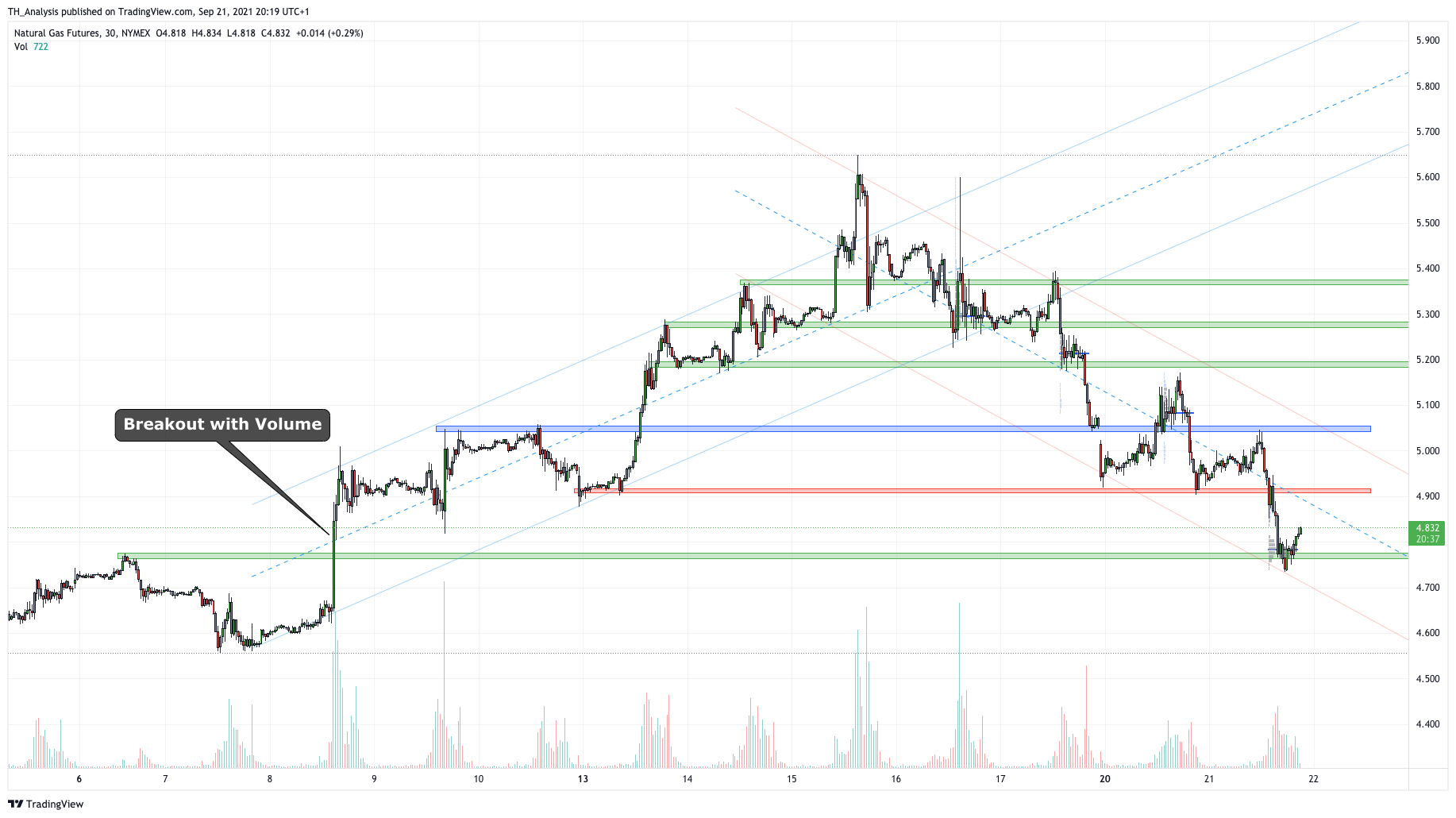

As they come down from the climactic top that caused panic in the halls of Westminster all the way around the shires, the technical are providing good support and resistance lines for trading off. The key is to wait for an old resistance swing high from the leg up, to now become support on the down leg. When that support breaks, we need to see it return to being resistance. As per the blue horizontal line in the chart above. Also keeping an eye on volume when we see a breakout/down shows where buyers were present before and where to maybe assume there could be buyers again. If those buyers don’t turn up, the most logical thing to do would be to continue shorting with the new trend.
